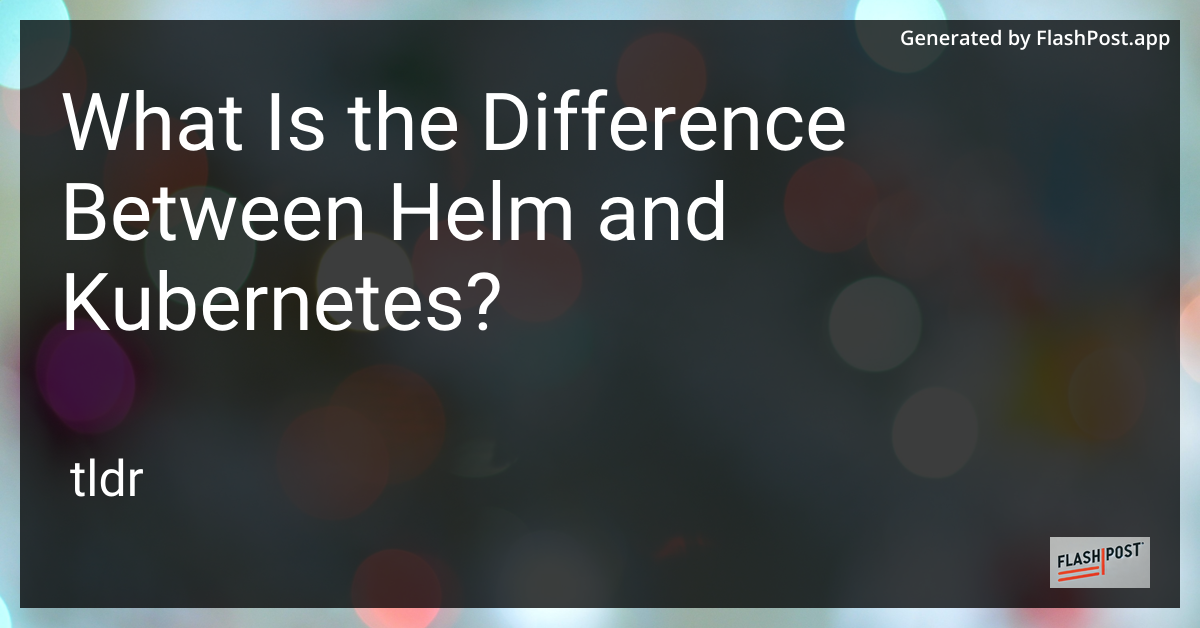
In the dynamic world of container orchestration and management, Kubernetes has emerged as the de facto platform for automating deployment, scaling, and operations of application containers across clusters of hosts. On the other hand, Helm is a package manager for Kubernetes, which simplifies the deployment and management of complex applications. This article delves into the differences between Helm and Kubernetes, exploring their roles, functionalities, and how they integrate to streamline DevOps practices.
Understanding Kubernetes
Kubernetes, often stylized as K8s, acts as the operational backbone for modern cloud applications. It provides a robust ecosystem that handles container orchestration, automating the deployment, scaling, and management of containerized applications. Here are some key features:
- Automated Deployment and Scaling: Kubernetes manages the scheduling and scaling of application containers based on demands.
- Self-healing: It can automatically restart failed containers and replace containers based on pre-defined policies.
- Service Discovery and Load Balancing: K8s offers in-built service discovery and load balancing, which ensures efficient distribution of network traffic.
- Storage Orchestration: It provides an abstraction layer for mounting storage dynamically.
For more insights into managing complex configurations in Kubernetes with Helm, check out this detailed guide on managing Helm chart configurations.
Helm: The Package Manager for Kubernetes
Helm is often compared to traditional package managers like apt/yum for Linux, but for Kubernetes environments. It enables users to define, install, and upgrade even the most complex Kubernetes applications. Key features include:
- Simplified Application Deployment: Helm packages Kubernetes resources into one collective unit known as Helm Charts.
- Version Control: It keeps track of versioned releases to simplify rollbacks and upgrades.
- Reusable Charts: Facilitates easy sharing and utilization of community-created charts to automate application deployment.
Key Differences Between Helm and Kubernetes
Functionality
- Kubernetes: Manages clusters and applications across distributed infrastructures. Think of it as the entire platform that orchestrates how containers move and adapt.
- Helm: Operates as the project manager within Kubernetes. It’s the tool to streamline application deployments and manage the lifecycle of Kubernetes applications.
Use Cases
- Kubernetes: Suitable for developers and operations teams needing to automate the container orchestration process.
- Helm: Ideal for simplifying repetitive tasks like managing applications' configurations and scaling environments.
Relationship
Kubernetes provides the orchestration layer, while Helm acts as the package manager sitting atop, enabling more manageable, repeatable deployments.
Conclusion
While both Helm and Kubernetes are pivotal in modern cloud-native environments, they serve distinct, complementary roles. Kubernetes orchestrates and Helm streamlines application deployment and management within Kubernetes. Together, they bolster DevOps processes, promoting efficiency and flexibility in managing containerized applications.
For further reading beyond Kubernetes and Helm, consider learning about ways to prevent helmet visor fog or check the ticker symbol Wilhelmina International to expand your business insights.